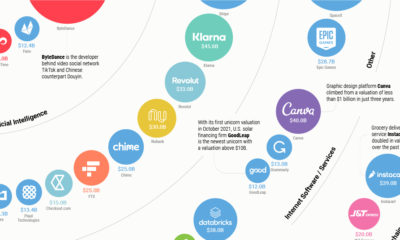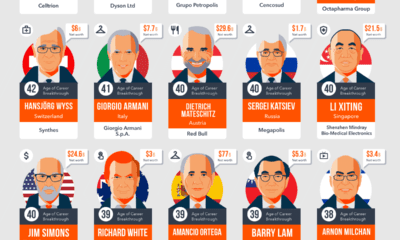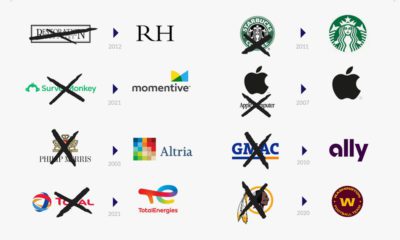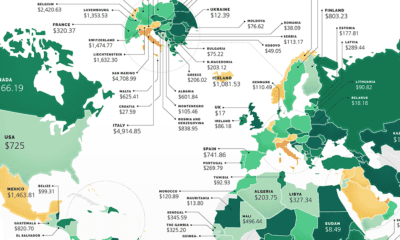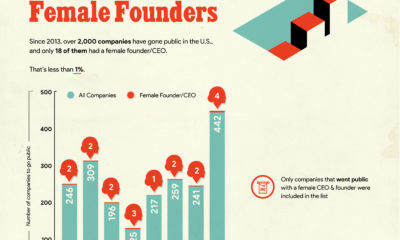While this number may seem high, unicorns are still quite the rarity. In the U.S. alone, there are currently 19,550 venture-backed startups vying for those same massive valuations. At the same time, it’s been estimated that each new startup only has a 0.00006% chance of becoming a billion dollar company.
How to Improve Those Odds
No one ever said that joining the ranks of unicorns would be easy, but there is some good news for aspiring founders. Today’s infographic, which comes to us from FounderKit, looks at traits of existing unicorns – and analyzing this wealth of data might help entrepreneurs in shaping their own companies for future success.
Put together with information from Fortune and Crunchbase, this infographic gives us some clues as to how game-changing unicorns have been built in the past. While it’s certainly not a prescription for future success, it does provide a blueprint for what’s needed to improve your chances of beating the odds.
Playing the Red Team
If you’re an entrepreneur with billion dollar dreams, take a close look at the categories that best resemble your startup. For example, if your model depends on leasing hardware to the energy sector as a major revenue source, you should note that the odds are mostly against you. For starters, only 7% of unicorns are hardware companies, and energy doesn’t register high as a major business sector that has seen many unicorns. Further, companies that rent or lease their physical or intellectual assets make up just 1% of recent unicorn companies, which makes this particular model look pretty disadvantageous. It doesn’t mean that this idea is not feasible – maybe it’s an underappreciated sector, or the idea is completely groundbreaking. However, given the information above, it’s most likely that this will be a tough go, so it’s worth making adjustments accordingly.
Playing the Green Team
Based on the above information, what combination of startup traits could provide the most common recipe for unicorn status? Let’s create a hypothetical new startup:
It should be consumer focused, since the majority of companies are B2C (62%) It should provide software, since 87% of all unicorns focus there This startup should be retail/e-commerce marketplace focused, a category home to a whopping 25% of recent unicorns It should have a model based on commission or brokerage fees (33% of recent unicorns)
It’s not hard to see similarities with the above traits and recent unicorns like Shopify or Airbnb, which both serve as solid precedents for success. Of course, it’s far from a guarantee of future unicorn status, but it does mean that you likely have better than a 0.00006% chance.
on But fast forward to the end of last week, and SVB was shuttered by regulators after a panic-induced bank run. So, how exactly did this happen? We dig in below.
Road to a Bank Run
SVB and its customers generally thrived during the low interest rate era, but as rates rose, SVB found itself more exposed to risk than a typical bank. Even so, at the end of 2022, the bank’s balance sheet showed no cause for alarm.
As well, the bank was viewed positively in a number of places. Most Wall Street analyst ratings were overwhelmingly positive on the bank’s stock, and Forbes had just added the bank to its Financial All-Stars list. Outward signs of trouble emerged on Wednesday, March 8th, when SVB surprised investors with news that the bank needed to raise more than $2 billion to shore up its balance sheet. The reaction from prominent venture capitalists was not positive, with Coatue Management, Union Square Ventures, and Peter Thiel’s Founders Fund moving to limit exposure to the 40-year-old bank. The influence of these firms is believed to have added fuel to the fire, and a bank run ensued. Also influencing decision making was the fact that SVB had the highest percentage of uninsured domestic deposits of all big banks. These totaled nearly $152 billion, or about 97% of all deposits. By the end of the day, customers had tried to withdraw $42 billion in deposits.
What Triggered the SVB Collapse?
While the collapse of SVB took place over the course of 44 hours, its roots trace back to the early pandemic years. In 2021, U.S. venture capital-backed companies raised a record $330 billion—double the amount seen in 2020. At the time, interest rates were at rock-bottom levels to help buoy the economy. Matt Levine sums up the situation well: “When interest rates are low everywhere, a dollar in 20 years is about as good as a dollar today, so a startup whose business model is “we will lose money for a decade building artificial intelligence, and then rake in lots of money in the far future” sounds pretty good. When interest rates are higher, a dollar today is better than a dollar tomorrow, so investors want cash flows. When interest rates were low for a long time, and suddenly become high, all the money that was rushing to your customers is suddenly cut off.” Source: Pitchbook Why is this important? During this time, SVB received billions of dollars from these venture-backed clients. In one year alone, their deposits increased 100%. They took these funds and invested them in longer-term bonds. As a result, this created a dangerous trap as the company expected rates would remain low. During this time, SVB invested in bonds at the top of the market. As interest rates rose higher and bond prices declined, SVB started taking major losses on their long-term bond holdings.
Losses Fueling a Liquidity Crunch
When SVB reported its fourth quarter results in early 2023, Moody’s Investor Service, a credit rating agency took notice. In early March, it said that SVB was at high risk for a downgrade due to its significant unrealized losses. In response, SVB looked to sell $2 billion of its investments at a loss to help boost liquidity for its struggling balance sheet. Soon, more hedge funds and venture investors realized SVB could be on thin ice. Depositors withdrew funds in droves, spurring a liquidity squeeze and prompting California regulators and the FDIC to step in and shut down the bank.
What Happens Now?
While much of SVB’s activity was focused on the tech sector, the bank’s shocking collapse has rattled a financial sector that is already on edge.
The four biggest U.S. banks lost a combined $52 billion the day before the SVB collapse. On Friday, other banking stocks saw double-digit drops, including Signature Bank (-23%), First Republic (-15%), and Silvergate Capital (-11%).
Source: Morningstar Direct. *Represents March 9 data, trading halted on March 10.
When the dust settles, it’s hard to predict the ripple effects that will emerge from this dramatic event. For investors, the Secretary of the Treasury Janet Yellen announced confidence in the banking system remaining resilient, noting that regulators have the proper tools in response to the issue.
But others have seen trouble brewing as far back as 2020 (or earlier) when commercial banking assets were skyrocketing and banks were buying bonds when rates were low.



